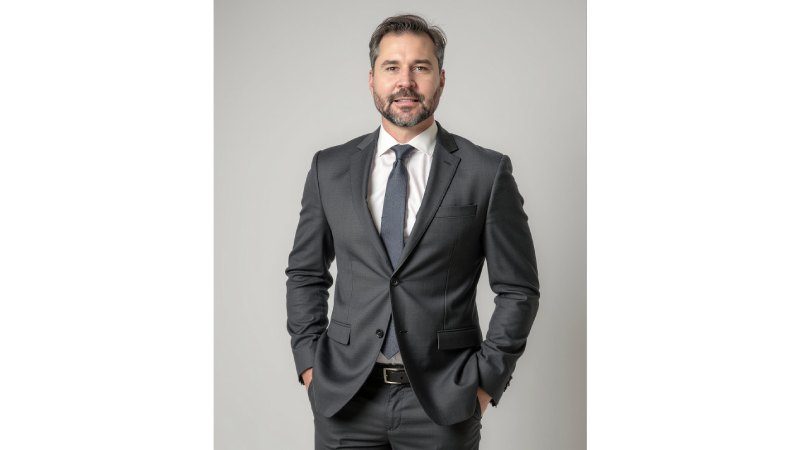
The cybersecurity industry is facing a moment of reckoning, and the catalyst is Artificial Intelligence. AI is no longer a speculative technology—it is the driving force behind both the most sophisticated cyber defenses and the most devastating attacks. As organizations worldwide grapple with an escalating threat landscape, the global cost of cybercrime is projected to exceed $10.5 trillion annually by 2025. This isn’t just a technological shift; it’s a strategic inflection point that demands visionary leadership. Enter Mark Whitehead, a cybersecurity executive whose two-decade career has positioned him at the forefront of this AI-driven revolution.
The AI Paradox: Defender and Adversary
AI’s dual role in cybersecurity is both its greatest promise and its most perilous challenge. On one hand, AI-powered tools are transforming how organizations defend themselves. Machine learning algorithms can process billions of data points in real time, identifying anomalies and predicting threats with unparalleled precision. On the other hand, cybercriminals are weaponizing AI to launch attacks that are faster, more targeted, and harder to detect. From AI-generated phishing campaigns to autonomous malware that evolves to evade detection, the battlefield has never been more complex.
Mark Whitehead has spent his career navigating this paradox. “AI is the ultimate double-edged sword,” he says. “It’s a force multiplier for both defenders and attackers. The organizations that succeed will be the ones that harness AI’s potential while mitigating its risks.”
The AI-Driven Threat Landscape: A New Era of Risk
The rise of AI has fundamentally altered the cybersecurity equation. Traditional defenses, which rely on static rules and signatures, are no longer sufficient. Attackers are using AI to automate and optimize their operations, enabling attacks at scale and with surgical precision. For example, AI-powered bots can now mimic human behavior, bypassing traditional security measures and infiltrating networks undetected. According to a 2023 report by Darktrace, AI-driven attacks have increased by 300% over the past two years, with no signs of slowing down.
Mark’s experience at PerimeterX and HUMAN Security—two companies that specialized in combating bot-driven threats—has given him unique insight into this evolving landscape. “Bots are just the beginning,” he says. “AI is enabling a new generation of threats that are more adaptive, more persistent, and more destructive. We’re in an arms race, and the pace is accelerating.”
AI as a Strategic Imperative: Transforming Cybersecurity
Despite the risks, Mark is unequivocal about AI’s potential to transform cybersecurity for the better. “AI is not just a tool; it’s a strategic imperative,” he explains. “When used responsibly, it can help us detect threats faster, respond more effectively, and even predict attacks before they happen.”
One area where Mark sees immense potential is in the use of AI for proactive threat hunting. “Traditional methods of threat detection are reactive,” he says. “You wait for an attack to happen, and then you respond. With AI, we can shift to a proactive model, where we identify and neutralize threats before they materialize.”
Mark’s work at SecureWorks and Trustwave SpiderLabs exemplifies this approach. By leveraging AI-driven analytics, these organizations were able to identify patterns and anomalies that would have been impossible to detect using human analysis alone. “AI allows us to see the big picture,” he says. “It connects the dots and uncovers hidden threats.”
The Leadership Imperative: Navigating the AI Revolution
As AI reshapes the cybersecurity landscape, leadership has never been more critical. “AI is not a silver bullet,” Mark warns. “It’s a tool, and like any tool, its effectiveness depends on how it’s used. Leaders need to understand its capabilities, its limitations, and its ethical implications.”
Mark believes that successful leadership in the age of AI requires three key elements:
- Strategic Vision: Leaders must understand how AI fits into their broader cybersecurity strategy. “AI is not a standalone solution,” he says. “It needs to be integrated into a holistic approach that includes people, processes, and technology.”
- Ethical Responsibility: The use of AI in cybersecurity raises important ethical questions, from data privacy to algorithmic bias. “We have a responsibility to use AI in a way that is transparent, accountable, and fair,” Mark emphasizes.
- Continuous Learning: The pace of change in AI and cybersecurity is relentless. “Leaders need to be lifelong learners,” he says. “They need to stay informed about the latest developments and be willing to adapt.”
A Call to Action: Seizing the AI Opportunity
The time to act is now. As AI continues to evolve, organizations that fail to embrace its potential will find themselves at a significant disadvantage. “AI is not just a technology trend; it’s a strategic imperative,” Mark says. “The organizations that succeed will be the ones that harness AI to enhance their defenses, empower their teams, and drive innovation.”
Mark’s career is a testament to the power of leadership in this new era. From his early roles at Deloitte and PwC to his leadership positions at SecureWorks, Trustwave SpiderLabs, and beyond, he has consistently been at the cutting edge of AI-driven cybersecurity. His ability to anticipate trends, navigate challenges, and deliver results makes him a trusted advisor and a visionary leader.
Conclusion: The Future of Cybersecurity Is AI-Driven
The cybersecurity industry is at a crossroads, and AI is the driving force behind this transformation. For organizations, the choice is clear: embrace AI and seize the opportunity to redefine cybersecurity, or risk being left behind. Leaders like Mark are showing the way, demonstrating how AI can be harnessed to build a safer, more resilient digital world.
As we look to the future, one thing is certain: AI will continue to shape the cybersecurity landscape in ways we can only begin to imagine. The question is, will we be ready? With leaders like Mark at the helm, the answer is a resounding yes.
Media Contact:
Website: https://ndaysecurity.com/
Email: Admin@ndaysecurity.com